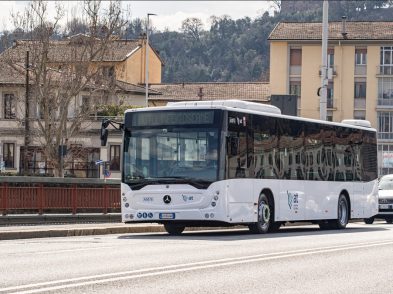In the shadow of the Fiorentina soccer stadium, the place where most Florentines flock to watch sports, there is a place that few know of and most would not think to exist: a baseball diamond.
Scattered across the field, Italian boys, ages 8 to 11, are wearing red caps embroidered with an ‘F’ to symbolize their city. Some are taking batting practice, others are being instructed how to properly turn a double play. Amidst all the throwing and swinging, a tall, lanky figure dressed in green and yellow shouts words of encouragement and instruction to those trying to play a game that is foreign to the majority of people in Italy.
Lee Foust’s colorful practice garb is hard to miss. Even if you didn’t know him, you might guess that he’s from Oakland, CA just by looking at his Athletic’s hat, shirt and jacket. The transplanted American teaches Italian literature at California State’s campus in Florence, but every Tuesday and Thursday he coaches his son’s little league team of the Ragazzi divison. Participation in Florence for the Federzione Italiana Baseball Softball (FIBS) climbed to 26 kids this year, enough to split the 8-11 year olds into two separate teams. The 15 teams in the Ragazzi division in Tuscany play games every Sunday, sometimes making long drives to other cities in the region.
At first Foust was on the same learning curve as the kids he was coaching. The father turned coach had to take classes in order to learn the vocabulary that Italians used when playing baseball. For example, the verb tirare is sometimes used to mean both ‘swing’ and ‘throw’. With only had one year of Little League play, Foust also needed to learn the ins and outs of the game. He’s no stranger to baseball, though, and experienced the glory days of the Oakland A’s in the 1970s as a child.
Sometimes Foust finds that less athletic kids will try baseball as an altenative to soccer. The coach likes the challenge because seeing his players develop is rewarding. Parents, who are learning the game along with their children, often have trouble understanding the rules. ‘Italians can hardly conceive of a sport that isn’t timed’, Foust said.
That some people have caught on to baseball in Italy is evident when Little League practice is finished. A team of older men take the field and begin to run, stretch and throw. This is the Fiorentina team most Florentines know nothing about. Instead of wearing violet purple and earning large salaries, they wear red and black and hold a day job. These are the men who play for the love of the game, in front of 200 fans at the 3,000 seat Cerreti field.
Nicola Bellomo, Fiorentina’s pitching coach, has been a part of the staff since 1990, and before that played for the team for 25 years. Currently the squad is one of nine that competes in Serie B, but Bellomo has been around to see Fiorentina play in Serie A1, the highest level of competition for baseball in Italy. Players are generally between the ages of 18 and 35 and have been playing ball for their entire lives. Few players, however, survive the standards of play as they grow older, or they simply lose interest. Moreover, just as soccer is more popular with girls than boys in the United States, so softball has attracted a more participation than baseball in Italy.
Bellomo says recruiting kids to play baseball is a difficult task since there are few Italian baseball stars for them to emulate. They follow American baseball, however, rooting for the Yankees, Mets and Red Sox. (Foust tells his team that rooting for the Yankees is like rooting for Florence’s rival soccer team, Juventus.)
With most Major League Baseball games starting in the early morning in Italy, it is probably near impossible for baseball to become a popular game with a national following. The spectators will continue to watch the Fiorentina team that plays in the big stadium under the lights, but the other team is content playing the game they love in the shadows.
To learn more information about the Fiorentina team, visit www.fiorentinabaseball.it
For information regarding FIBS, visit www.fibstoscana.it




